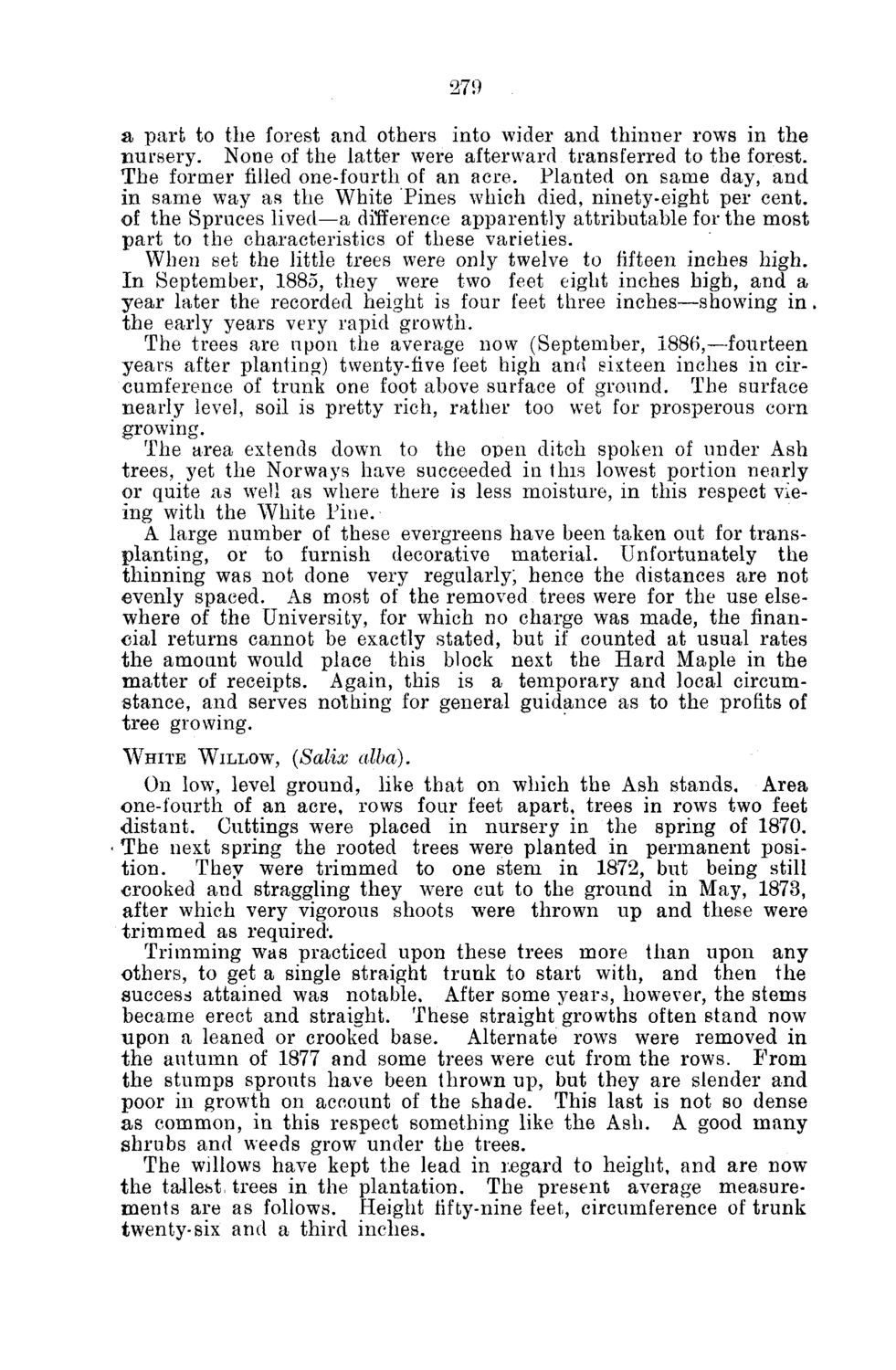| |
| |
Caption: Board of Trustees Minutes - 1886
This is a reduced-resolution page image for fast online browsing.

EXTRACTED TEXT FROM PAGE:
279 a part to the forest and others into wider and thinner rows in the nursery. None of the latter were afterward transferred to the forest. The former filled one-fourth of an acre. Planted on same day, and in same way as the White Pines which died, ninety-eight per cent, of the Spruces lived—a difference apparently attributable for the most part to the characteristics of these varieties. When set the little trees were only twelve to fifteen inches high. In September, 1885, they were two feet eight inches high, and a year later the recorded height is four feet three inches—showing i n . the early years very rapid growth. The trees are upon the average now (September, 1886,—fourteen years after planting) twenty-five feet high and sixteen inches in circumference of trunk one foot above surface of ground. The surface nearly level, soil is pretty rich, rather too wet for prosperous corn growing. The area extends down to the open ditch spoken of under Ash trees, yet the Norways have succeeded in this lowest portion nearly or quite as well as where there is less moisture, in this respect vieing with the White Pine. A large number of these evergreens have been taken out for transplanting, or to furnish decorative material. Unfortunately the thinning was not done very regularly; hence the distances are not evenly spaced. As most of the removed trees were for the use elsewhere of the University, for which no charge was made, the financial returns cannot be exactly stated, but if counted at usual rates the amount would place this block next the Hard Maple in the matter of receipts. Again, this is a temporary and local circumstance, and serves nothing for general guidance as to the profits of tree growing. WHITE WILLOW, (Salix alba). On low, level ground, like that on which the Ash stands. Area one-fourth of an acre, rows four feet apart, trees in rows two feet distant. Cuttings were placed in nursery in the spring of 1870. The next spring the rooted trees were planted in permanent position. They were trimmed to one stem in 1872, but being still crooked and straggling they were cut to the ground in May, 1873, after which very vigorous shoots were thrown up and these were trimmed as required*. Trimming was practiced upon these trees more than upon any others, to get a single straight trunk to start with, and then the success attained was notable. After some years, however, the stems became erect and straight. These straight growths often stand now upon a leaned or crooked base. Alternate rows were removed in the autumn of 1877 and some trees were cut from the rows. Prom the stumps sprouts have been thrown up, but they are slender and poor in growth on account of the shade. This last is not so dense as common, in this respect something like the Ash. A good many shrubs and weeds grow under the trees. The willows have kept the lead in i.egard to height, and are now the tallest, trees in the plantation. The present average measurements are as follows. Height fifty-nine feet, circumference of trunk twenty-six and a third inches.
| |